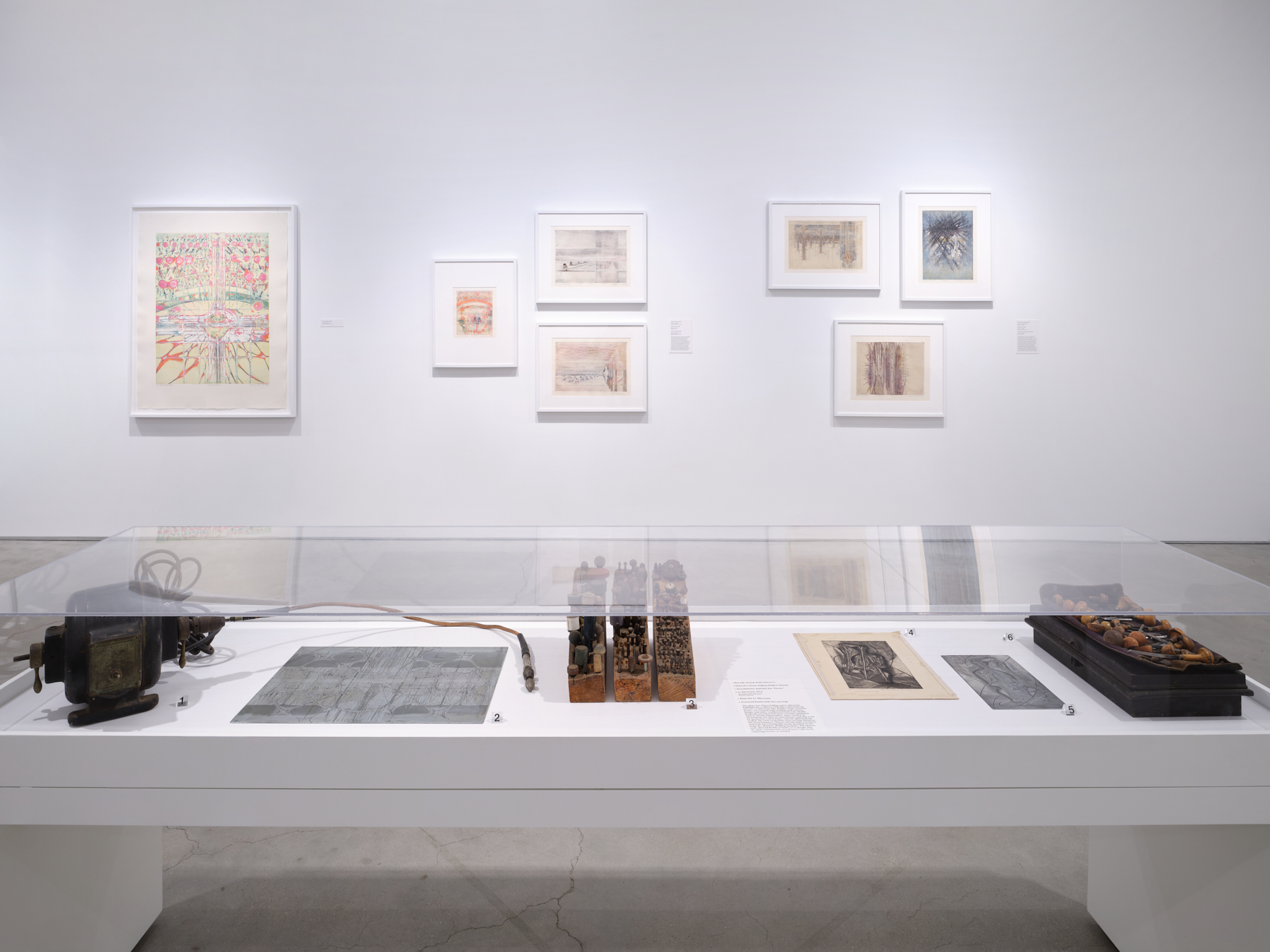
Indian master intaglio painter Krishna Reddy played a critical role in developing viscosity printing, which allows an artist to print a multi-colored image from a single printing plate. “Krishna Reddy: Heaven in a Wildflower,” now on at Print Center New York, is the first monographic exhibition to focus on the artist in decades and a rare opportunity to see Reddy’s work. (The last major exhibition of Reddy dates back to his solo exhibition at the Bronx Museum in 1981.) Coinciding with Reddy’s centennial, “Heaven in a Wildflower” brings together more than fifty prints, sculptures, ephemera and working materials on loan from the artist’s estate that showcase Reddy’s material and conceptual approach to printmaking.
For curator Sarah Burney, the opportunity to work on the exhibition was a full-circle moment. “Looking back, it seems like everything was leading up to this show,” Burney told Observer. After studying printmaking at Wellesley College, she went to work in a contemporary South Asian art gallery and then became studio manager for contemporary South Asian artist Zarina Hashmi and manager for programs and exhibitions at the Robert Blackburn printmaking workshop. Blackburn was a close friend of Reddy’s, and Hashmi was Reddy’s student and friend, as well as a godparent to Reddy’s daughter, Apu. “I met Krishna numerous times at Hashmi’s studio, but he was always sort of this very revered teacher figure, so it was my biggest regret that I didn’t sit down and talk to him about his art.” Burney says.
SEE ALSO: Understanding the Conceptual Work of Kimsooja
“Heaven in a Wildflower” is her chance to reconnect with Reddy, but she’s not the only one in the printmaking world whose career trajectory was deeply influenced by him. The legacy of his pedagogy was evident at the exhibition opening, where more than 400 people in the printmaking community braved a freezing winter night to attend. “So many people, including one of the Guerrilla Girls, told me that Reddy was their printmaking professor,” Burney said, “and that was a beautiful testament to his community building work and dedication.”


Reddy’s extensive writings about both art and his teaching guided her approach to curation. “Reading his philosophy unlocks his technical innovation, his artistry and his pedagogy,” she explained, adding that she went through every box of the Krishna Reddy Papers at the Special Collections at New York University, where Reddy taught printmaking. But in addition to the intangible, “Heaven in a Wildflower” explores Reddy’s studio practices—something Burney gained insight into after speaking extensively to Judy Reddy, Krishna’s widow, and spending time in his studio.
In fact, one of the most interesting parts of the exhibition is the display of the artist’s retrofitted tools and working materials, which came from dental toolkits. Traditionally, people draw on a plate, but Reddy saw the sculptural possibilities within the plate. He was not as interested in the technical specifications of printmaking per se, but rather was fascinated by the various visual painterly effects he could create.


“Heaven in a Wildflower” also emphasizes the Indian roots of Reddy’s artistic voice and challenges the common Eurocentric reading of Reddy’s works as learning and borrowing from the artistic grounds of Paris and New York. “Whenever people spoke about Krishna, they would start the clock from Atelier 17 when he came to Europe, as if Europe made him,” Burney said. “As I was doing my research, I realized that Reddy left India as a fully mature artist.” He studied in Santiniketan, the school Rabindranath Tagore founded, with Nandalal Bose, was part of the Quit India movement, and lived through partition and the Bengal famine. Burney included his Bengal Famine drawings in the exhibition specifically as a correction to misconceptions about Reddy’s artistic development. “We need to talk about those early years before Europe. To me, the way he considers a subject, the deep philosophical approach he had to art and life and teaching was all grounded in the early years in India, which is why I really wanted to put that vitrine of early work into the exhibition.”


As for the title of the show, Krishna’s way of looking at art was to find ‘heaven in a wildflower.’ He paid very close attention to details—both expected and not; accidents such as the ink and oil not mixing became a beautiful moment of discovering viscosity. As an artist who saw education as his primary mission and was unconcerned about the fluctuations and predilections of the art market, Reddy created numerous uneditioned works, printing as many as he needed to explore the imaginative yet socially sensitive images of the life that surrounded him.
“Krishna Reddy: Heaven in a Wildflower” is at Print Center New York through May 21, 2025.
<
